In several philosophies the fundamental components of a human being are divided into three aspects: the mind, the body and the soul (a.k.a. the spirit or the heart). Lets see how these concepts apply to Spidey.
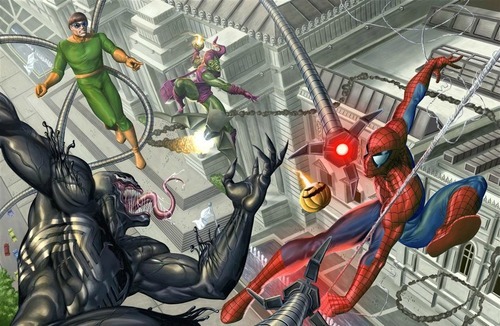
Spinning off from my ‘All the Colours of the Costume’ article, we are going to look at how Spidey’s relationships with his greatest loves and foremost foes fit within the context of this philosophy.
Much like the above mentioned essay, this is purely speculative and built upon coincidences that have cropped up across decades of stories. But also like that article it’s all in the name of fun.
The Mind
Whilst I admit this interpretation relies upon various flanderizations of Gwen’s character (such as Spider-Man: Blue), we could say that Gwen and her relationship with Peter represented the mind due to their mutual association with science.
If you buy into the arguments by many fans, creators and staff members of the Marc Webb Spider-Man movies, Gwen was Peter Parker’s ‘intellectual equal’. Or at least his equal in terms of scientific interest and academic acumen.
However, if you do not truly buy into that view of Gwen (which I could more than understand) she was at the very least a fellow science major with a passion for the subject.

Among Spidey foes though the mind is of course best represented by Doctor Octopus.
He might not be the only highly intelligent villain in Spider-Man’s rogue’s gallery, but more than any other foe Doc Ock is defined by his intellect. That is his true super power.
His entire motivation at the end of the day is to have the masses recognize his genius.
Otto is fundamentally a scientist like Peter and his schemes revolve around scientific pursuits or experiments, or otherwise make use of doomsday devices common in ‘mad scientist’ stories. Peter fights him physically but their conflicts routinely involve them matching wits and calculating the best way to counter their respective attacks.
You could even argue that the nature of their powers requires them to employ more than a little mathematics and on the fly calculations during their battles
What angle should Spidey attack from to get past those arms?
By Otto’s calculations the Wall Crawler will dodge his tentacle by diving left in 0.5 seconds, leaving himself wide open to an uppercut strike.
This kind of mental jousting rendered physical (along with his tech based crimes and equipment) is what makes Doc Ock the most intellectually taxing of all of Spider-Man’s foes.
And of course love it or hate it (I am the latter), Doc Ock’s most ambitious scheme against Spider-Man to date hinged upon supplanting the Web-swinger’s mind with his own.


The Body
Not to be crass, but if there was just one Spidey girlfriend to associate with the body, it’d surely be Felicia?
The body is often symbolic of the superficial and to a certain extent Felicia’s relationship with Peter was superficial.
Their first encounter involves Peter being utterly dazzled by his physical attraction to Felicia (a recurring theme throughout their encounters) whilst Felicia is drawn to the mysterious, glamorous and free spirited outlaw she mistakes Spider-Man to be.
When she sees him for who he really is and her idea of him begins to be eroded she grows less attracted to him.
Furthermore Spidey and Black Cat spent most of their time together during (and after) their relationship hopping across rooftops and fighting crime. In other words they spent most of their time engaging in predominantly physical activities.
Additionally Felicia moreso than Spider-Man’s other girlfriends has (though it’s not always been depicted well) been overtly sexual, with their relationship from the outset loaded with sexual tension. Sex of course routinely being linked in various philosophies with the body.
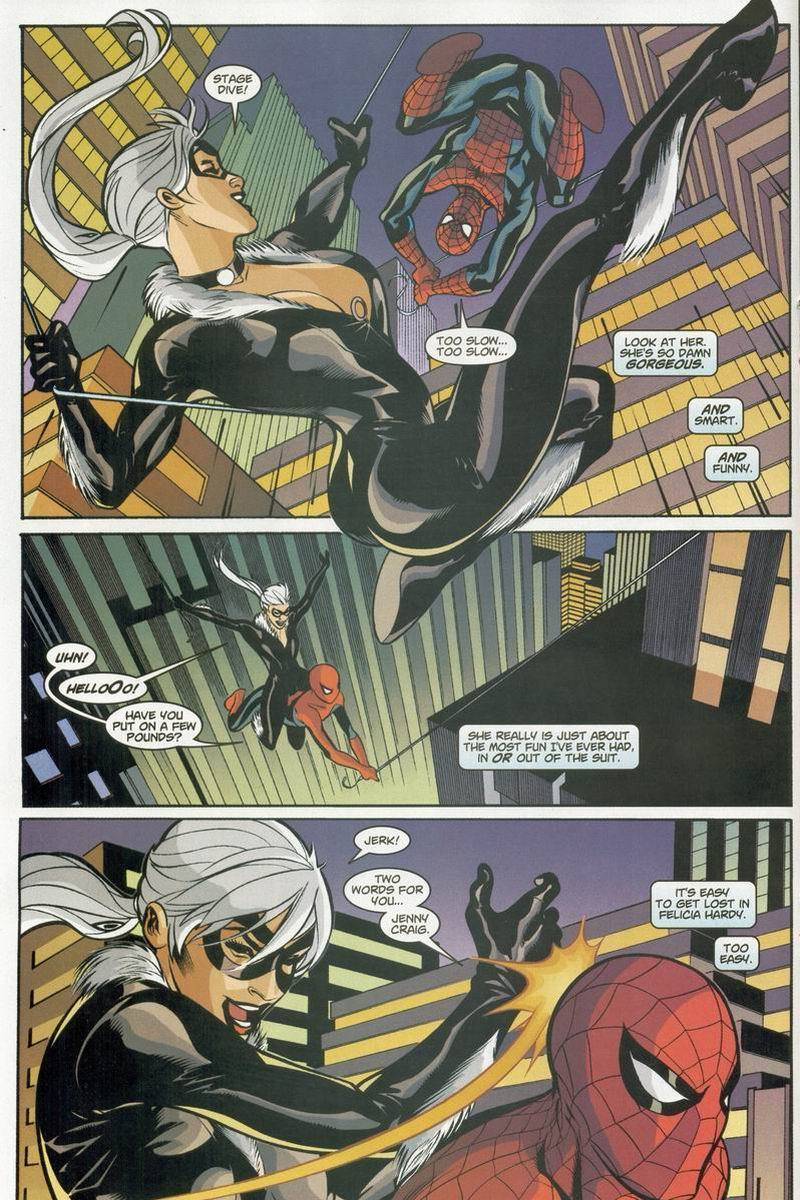

Given Felicia’s choice of colours it is rather appropriate then that it is Venom who best represents the body among Spidey’s foes.
If we focus just upon the symbiote itself, throughout it’s history it has displayed a desire to physically bond with Spider-Man and was at first believed to be a form of alien clothing. Not only is the association between the body and clothing fairly obvious, but it also touches upon the link between the body and superficiality I spoke of above.
Us humans tend to judge one another based upon how we look and (for better or worse) our fashion choices are a huge part of that. It is a fact many people routinely play into, for example how many of us wear clothes we wouldn’t normally wear when going for job interviews? And how many times have we tweaked what we wear to give the best possible impression for the specific job we are interviewing for? Like I said, it all plays into the idea of superficiality because wearing these clothes on our bodies gives an impression (which might not be accurate) of who we are as people. The symbiote and black costume jive with this idea for Spider-Man and you can read more about that in my ‘Red vs. Black‘ essay series.
However, if we were to focus upon Venom as the symbiote bonded with Brock, we can say that they also represent the body because their confrontations with Spider-Man are almost purely physical ones.
With or without the symbiote, the thing that stands out most about Eddie Brock is his sheer bulk, with his body building hobby prominently featured throughout his early appearances. It is actually quite vital during the explanation of his motivations.
In fact (apart from his teeth) I believe that the sheer bulk of Venom was the most shocking and arresting thing about his/their very first appearance in ASM #299 since it showcased him/them as a kind of distorted vision of Spider-Man himself.
But that’s just talking about superficialities again, the fact is that Venom’s muscles went beyond a striking visual. It was their raw physical strength along with the other abilities (usually used offensively) stemming from the symbiote (essentially a part of Venom’s body) that rendered them such a fearsome foe for Spider-Man.
Venom was not simply an evil looking Spider-Man (though again, that’s to do with the superficial), they were explicitly showcased as the bigger, badder and more powerful Spider-Man. Peter was always struggling to simply not be physically overwhelmed by him. Unlike many of his other foes Spider-Man’s own physical abilities (his strength, his speed, etc) could do little to harm Venom; they were all force.
And of course Venom’s early motivation was nothing more and nothing less than to violently murder Spider-Man. Other villains might want to kill Spider-Man and we might see them attempting to do so, but Venom was fundamentally built around that concept.
Their early appearances emphasis this as they frequently feature the evocation of gory images of bodily harm that they wish to visit upon Spidey. The most infamous of these of course was his proclamation that he wants to eat Spider-Man’s brain.
The brain might be associated with the mind first and foremost, but at the end of the day eating is a bodily function.

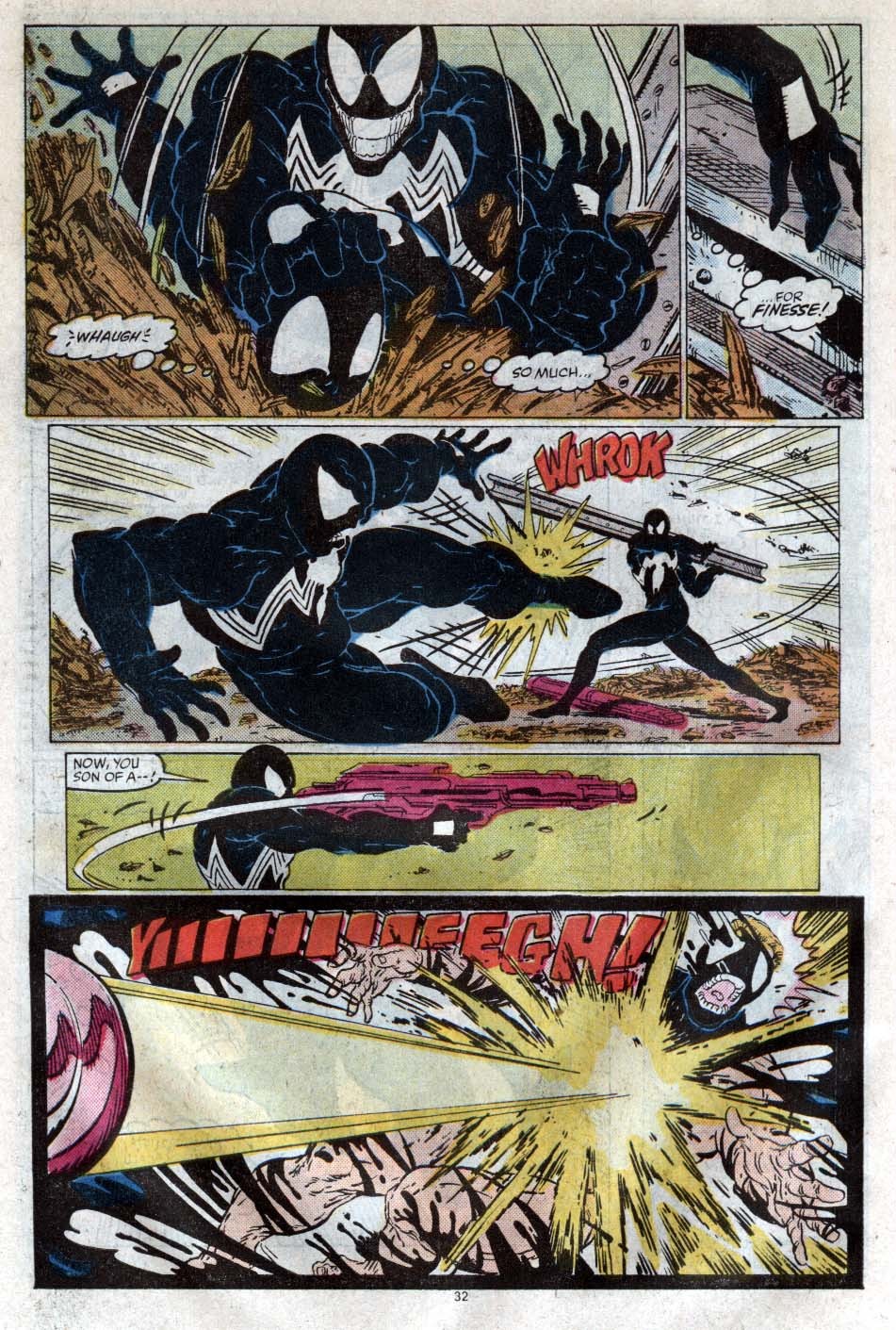
The Soul
Finally the soul (or heart/spirit) is represented by Peter’s relationship with Mary Jane.
This isn’t just by default or because MJ has been at times described as a ‘free spirited’ person.
First and foremost, though Gwen and Felicia at face value might seem to have more in common with Peter, he and MJ are truly kindred spirits.
Though she isn’t a science major or a costumed adventurer, Mary Jane fundamentally understands and gets Spider-Man in a way no other woman does.
This is owed to her experiences growing up and throughout her life. Like Peter she came from a home marked by tragedy. Like him she entered the working world early and didn’t have much money.
And her experience of abandoning her sister and putting up a carefree front to the world at large lent her an understanding of Peter’s sense of guilt, responsibility, isolation and double life. She knew what it was to hide who you really are and mask your pain.
Because of this MJ is the perfect complement to Spider-Man and helps complete him as a person, making him a better, more powerful and ultimately fulfilled person.
This is the part where I could discuss the notion of ‘soulmates’ and a certain Hellish story from 2007 in regards to that, but instead I think I’ll just leave it there.

Last but not least we have Norman Osborn a.k.a. the O.G. (that’s ‘Original Goblin’).
Whilst ‘the soul’ can be interpreted as many things, perhaps a clearer definition of the term would be ‘the heart’. Which brings to mind the 2002 Spider-Man movie.
For all the liberties the film took with the character, this does rather nicely sum up Norman Osborn’s character in regards to his relationship with Spider-Man.
He isn’t trying to simply physically harm Spider-Man or out think him. He is trying to break his heart, destroy his spirit and corrupt his soul.
He could break Peter’s bones or invent something to counter his abilities. But most of his actions against Spidey don’t focus upon that. Let’s review some of Norman’s schemes against Spider-Man shall we?
- He’s attempted to destroy Spider-Man’s very sense of self by convincing him he is a clone.
- He’s tried to tempt Spider-Man into becoming his son and heir.
- He’s goaded Spider-Man into nearly killing him.
- He’s forced Spidey into breaking the law by liberating him from prison.
- Above all else though he has tortured, grievously injured, killed and otherwise tormented the people in Peter’s life that he cares for the most.
However, the nature of these tactics ultimately reveal Peter’s true nature.
In the course of all of Norman’s efforts Peter has been left with lifelong scars. And yet the fact that he is able to ultimately survive and thrive in spite of the Goblin’s best efforts to break him demonstrates a deeper refusal to give into the worst things in life.

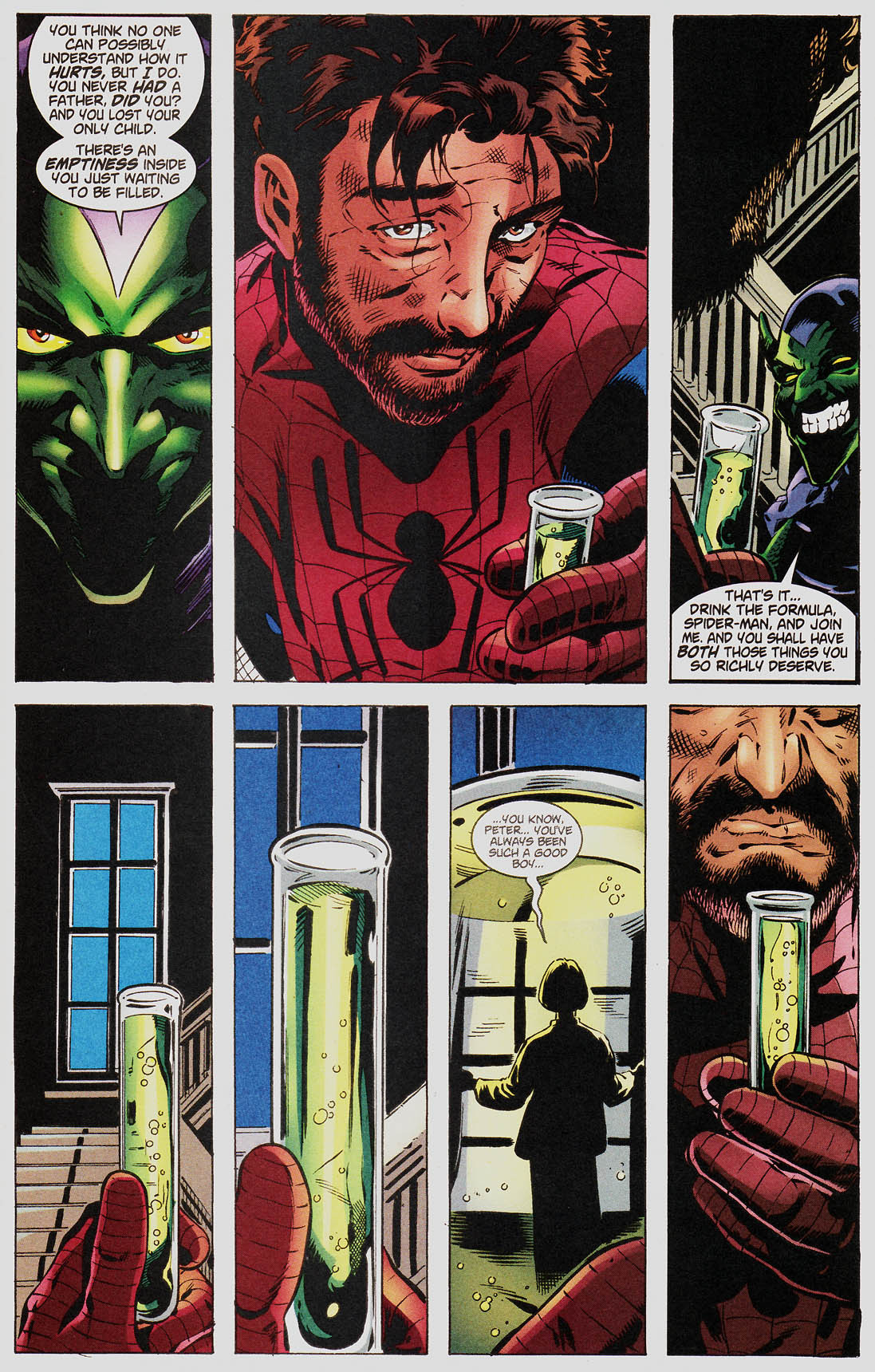
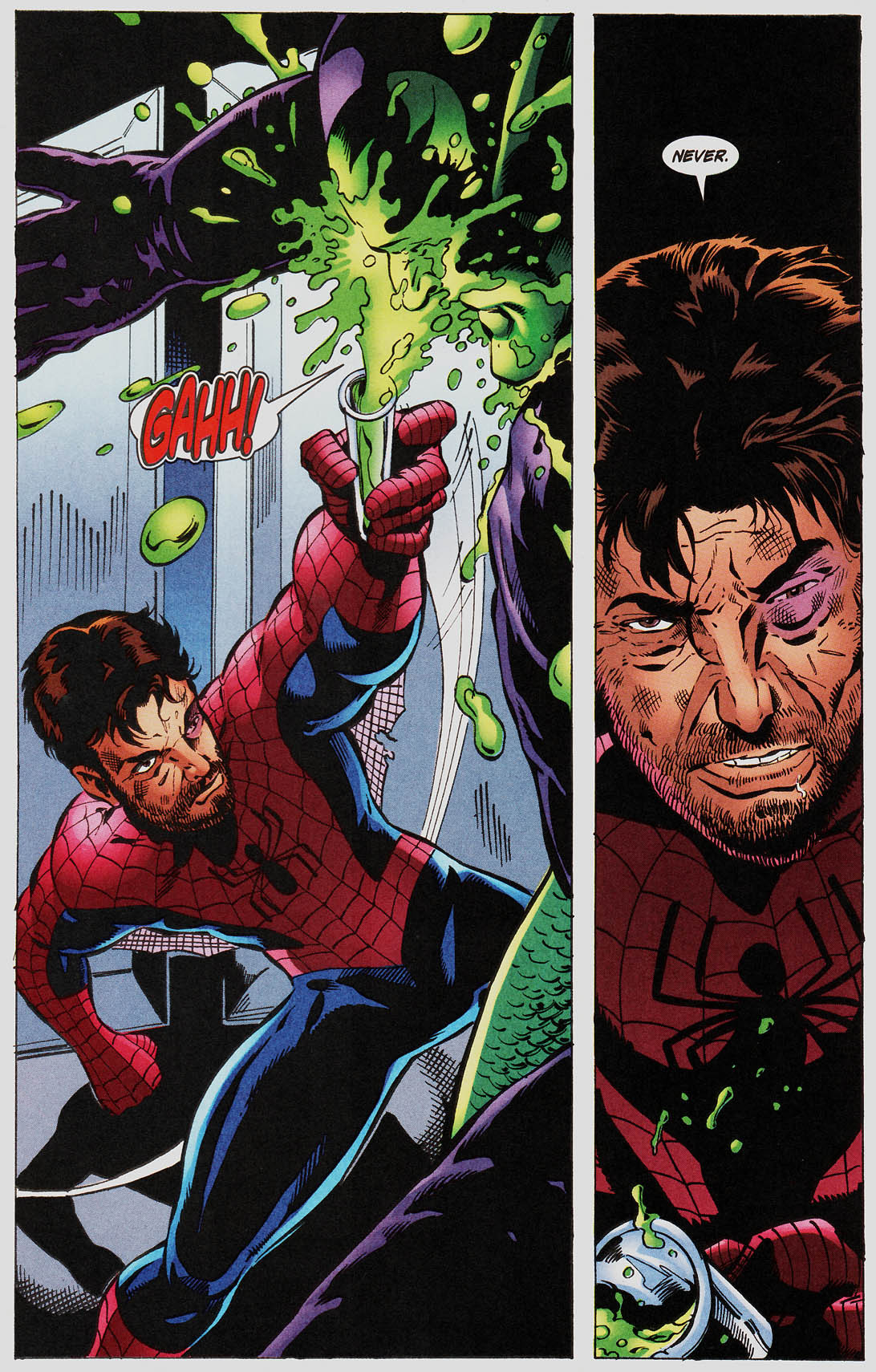
The Green Goblin is the villain who truly reveals to us the soul of Spider-Man.
And that is the soul of a flawed, imperfect and ultimately human man who is nevertheless a true hero.


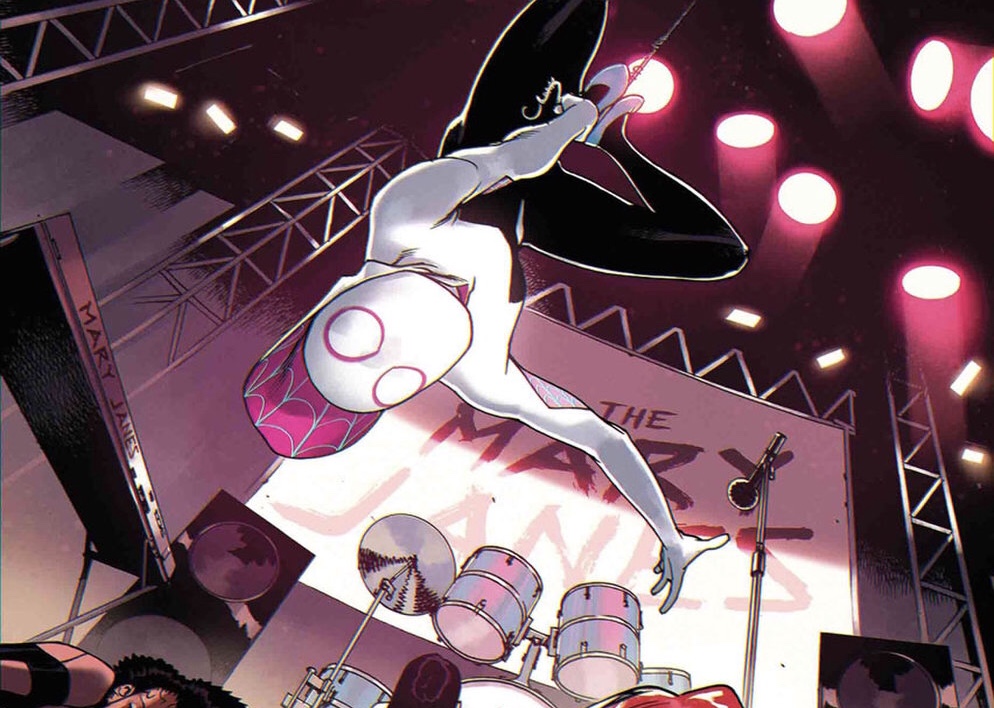
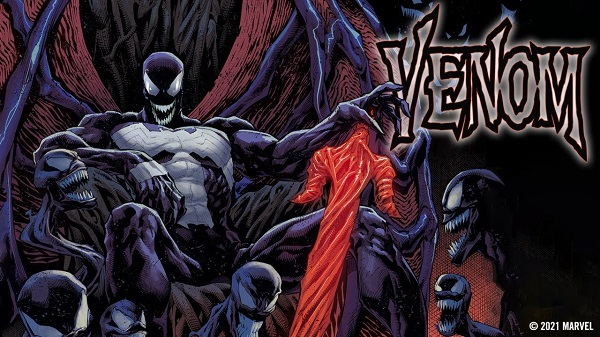
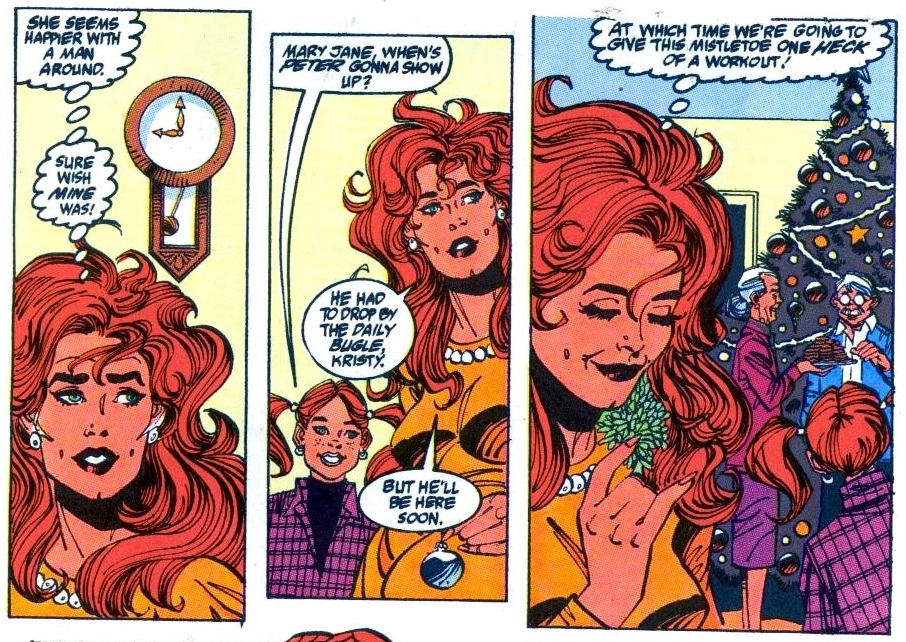





How could I have missed this article for so long?
Alex, this is a very good character approach – exactly what I try to achieve in mine. But the catch is, being a Spider-Historian, most of them should contextualize those three elements (mind, body, and soul) according to the story under analysis.
So definitely, I’ll go back to this one and more for further insight.
Cheers!
Whenever someone talks about Gwen being Peter’s intellectual equal and loving science, at first it always feels like a retcon – something modern writers added to her character to make her a more interesting partner for Peter. Then I remember that it was there in her original appearances, but it feels like it was forgotten and overshadowed by her relationships with Peter and her father.
Thinking back, I can only remember three times her knowledge of science was mentioned: (1) when she was first introduced and we were told she was a science student, (2) Ditko scenes of her in the school lab when Flash/Harry/etc were bullying/making fun of Peter, and (3) when Peter took her to the museum (with Professor Warren chaperoning) . Beyond that, I’d say the majority of her scenes were (a) her and Peter mooning over each other, and (b) her crying in front of her father. It’s like the book forgot that she was a science-whiz.
@Joshua Nelson.
Thank you…but you ain’t seen nothing yet…
Very insightful article. Your passion for the character really shines through.
@Chi-Town Spidey.
Thank you
“he and MJ are truly kindred spirits” DAMN STRAIGHT!! Marvel uses that as a tease to boost sales on variant covers. UGH!
Great article Alex!